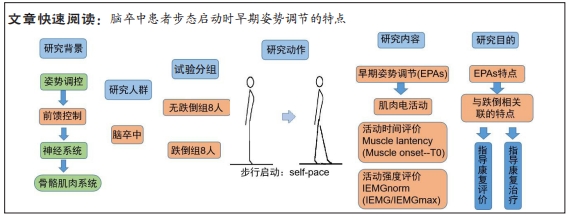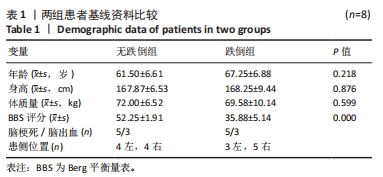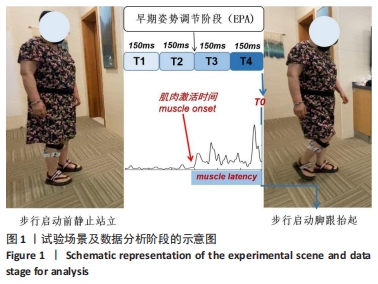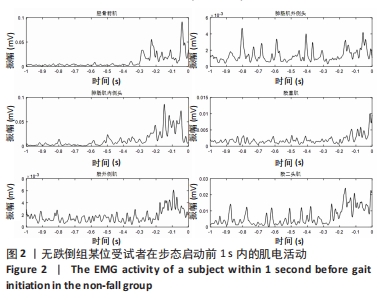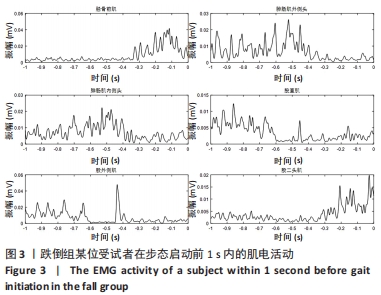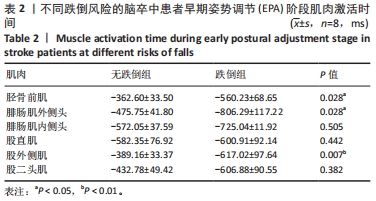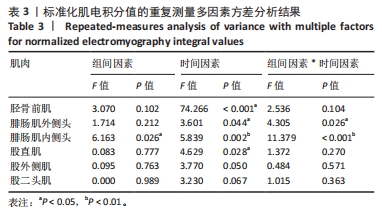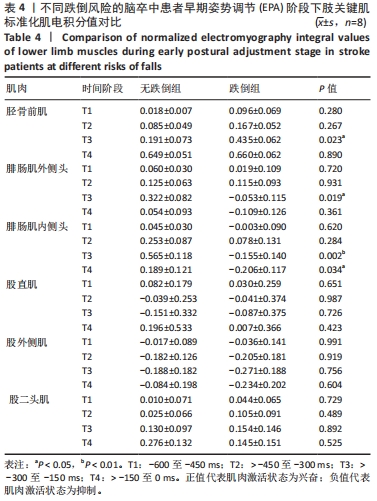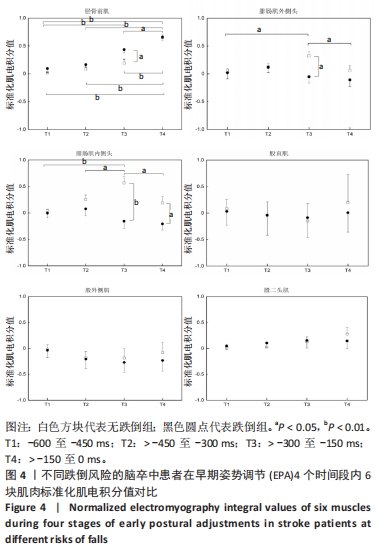[1] 王陇德,彭斌,张鸿祺,等.《中国脑卒中防治报告2020》概要[J].中国脑血管病杂志,2022,19(2):136-144.
[2] 江滨.现阶段我国脑卒中流行特征及防治现状对全科医疗服务的启示和建议[J].中国全科医学,2019,22(30):3653-3661.
[3] Goto Y, Otaka Y, Suzuki K, et al. Incidence and circumstances of falls among community-dwelling ambulatory stroke survivors: a prospective study. Geriatr Gerontol Int. 2019;19(3):240-244.
[4] Tsai W, Lien H, Liu W, et al. Early and anticipatory postural adjustments in healthy subjects under stable and unstable sitting conditions. J Electromyogr Kinesiol. 2018;12(43):21-27.
[5] Belenkiy V, Gurfinkel V, Pal’tsev Y. Elements of control of voluntary movements. Biofizika. 1967;12(1):135-141.
[6] Kanekar N, Aruin AS. Improvement of anticipatory postural adjustments for balance control:effect of a single training session. J Electromyogr Kinesiol. 2015;25(2):400-405.
[7] Krishnan V, Aruin AS, Latash ML. Two stages and three components of the postural preparation to action. Exp Brain Res. 2011;212(1):47-63.
[8] Klous M, Mikulic P, Latash ML. Early postural adjustments in preparation to whole-body voluntary sway. J Electromyogr Kinesiol. 2012;22(1):110-116.
[9] 中华医学会神经病学分会,中华医学会神经病学分会脑血管病学组.中国各类主要脑血管病诊断要点2019[J]. 中华神经科杂志,2019,52(9):710-715.
[10] Harm S, Latash ML. The effects of muscle vibration on anticipatory postural adjustments. Brain Res. 2004;1015(1-2):57-72.
[11] CESARI P, PISCITELLI F, PASCUCCI F, et al. Postural Threat Influences the Coupling Between Anticipatory and Compensatory Postural Adjustments in Response to an External Perturbation. Neuroscience. 2022;10(490):25-35.
[12] Asaka T, Wang Y, Fukushima J, et al. Learning effects on muscle modes and multi-mode postural synergies. Exp Brain Res. 2008;184(3):323-338.
[13] Danna-Dos-Santos A, Slomka K, Zatsiorsky VM, et al. Muscle modes and synergies during voluntary body sway. Exp Brain Res. 2007;179(4):533-550.
[14] Zhao Z, Watanabe K, Asaka T, et al. Postural control in preparation to a step during support surface perturbation. Res Sports Med. 2020;28(4):588-593.
[15] Curuk E, lEE y, Aruin AS. Individuals With Stroke Use Asymmetrical Anticipatory Postural Adjustments When Counteracting External Perturbations. Motor Control. 2019;1-11. doi: 10.1123/mc.2018-0083.
[16] Wang Y, Watanabe K, Asaka T. Anticipatory and Compensatory Postural Adjustments in Response to Dynamic Platform Perturbation during a Forward Step. J Mot Behav. 2023;55(1):31-38.
[17] Brunt D, Vander Linden DW, Behrman AL. The Relation between limb loading and control parameters of gait initiation in persons with stroke. Arch Phys Med Rehabil. 1995;76(7):627-634.
[18] Sousa A, Silva A, Santos R. Ankle anticipatory postural adjustments during gait initiation in healthy and post-stroke subjects. Clin Biomech (Bristol, Avon). 2015;30(9):960-965.
[19] Kirker SG, Simpson DS, Jenner JR,et al. Stepping before standing hip muscle function in stepping and standing balance after stroke. J Neurol Neurosurg Psychiatry. 2000;68(4):458-464.
[20] Ko M, Bishop MD, Behrman AL. Effects of limb loading on gait initiation in persons with moderate hemiparesis. Top Stroke Rehabil. 2011;18(3):258-268.
[21] RAjachandrakumar R, Fraser JE, Schinkel-Ivy A, et al. Atypical anticipatory postural adjustments during gait initiation among individuals with sub- acute stroke. Gait Posture. 2017;52:325-331.
[22] Curuk E,Lee Y, Aruin AS. Individuals with stroke improve anticipatory postural adjustments after a single session of targeted exercises. Hum Mov Sci. 2020;69:102559.
[23] McCombe Waller S, Yang CL, Magder L, et al. Impaired motor preparation and execution during standing reach in peoplewith chronic stroke. Neurosci Lett. 2016;630:38-44.
[24] Pollock CL, Carpenter MG, Hunt MA, et al. Physiological arousal accompanying postural responses to external perturbations after stroke. Clin Neurophysiol. 2017;128(6):935-944.
[25] Bouisset S, DO M. Posture, dynamic stability, and voluntary movement. Neurophysiol Clin. 2008;38(6):345-362.
[26] Wang D, Mahe G, Vidal PP. Inconsistent anticipatory postural adjustments (APAs) in rugby players: a source of injuries? BMJ Open Sport Exerc Med. 2018; 4(1):e000303.
[27] Ito T, Azuma T, Yamashita N. Anticipatory control in the initiation of a single step under biomechanical constraints in humans. Neurosci Lett. 2003;352(3):207-210.
[28] Frank JS, Earl M. Coordination of posture and movement. Physical Therapy. 1990;70(12):855-863.
[29] Fiolkowski P, Brunt D, Bishop M, et al. Does postural instability affect the initiation of human gait?.Neurosci Lett. 2002;323(3):167-170.
[30] Queralt A, Valls-Solé J, Castellote JM. Speeding up gait initiation and gait-pattern with a startling stimulus. Gait Posture. 2010;31(2):185-190.
[31] Kaoru Takakusaki. Neurophysiology of gait:from the spinal cord to the frontal lobe.Mov Disord. 2013;28(11):1483-1491. |
